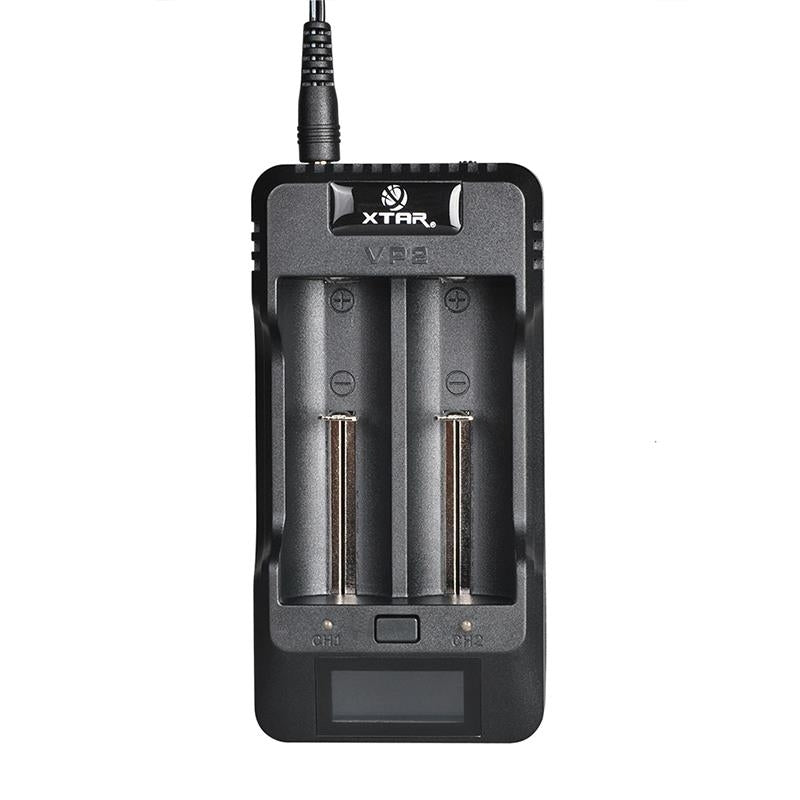Here's a bit more info.
I have 3 TH30 Headlamps and a TC15 that all came with IMR18650s.
I also have a thrunite PB with a regular 18650 in it.
The IMR cells are rated at 15 Amps and the reg cell at 10 Amps.
I've been using the reg 18650 in my lights because I needed a backup and it worked. The lights only use that many amps on high/turbo, so I figures it would be fine if I didn't use the lights on high with that perticular cell.
The reg 18650 is the cell that has issues.
One of my IMR cells sometimes has issues, but it is not consistant.
The reg cell works fine in my headlamps, and I can swap it between them just fine. There are no issues.
The reg cell does not work in the TC15 unless I reset it.
Example 1. I remove the reg cell from a headlamp and put it in my TC15. The TC15 will not turn on even in firefly mode. The cell is tripped. To fix this, I plug in the cable to charge the light and the cell is reset.
Example 2. I remove the reg cell from a headlamp and put it in my TC15. I then remove it from the TC15 and put it back in the headlamp. The cell has been tripped and will not turn on. To fix this, I plug in the cable to charge the headlight and the cell is reset.
Example 3. The reg cell has been put in the TC15 and has been reset. The TC15 is working. I mechanically lock out the TC15 and then unlock it. The cell has once again tripped. To fix this, I plug in the cable to charge the light and the cell is reset.
That sounds very familiar, I assume you just replaced the bad ccells? I think I'll get a bay charger soon and then a bunch more cells. How do you like your Xtar VP2?
Thanx. Let me assimilate / correlate this info further, but just quickly for the moment:
- Do you have any cell that can be used in the TC15 with NO issues? If not, you're not finished yet. Cells tripping protection circuits is a red flag, and needs to be eliminated (not just worked-around by resetting them) before you're finished.
- Do you feel everything you've done / tried has eliminated the possibility of a (possibly intermittent) defect / failure in the TC15? If not, I'd consider that a required objective. So far, I'm not sure you've used / tried anything in it that actually works properly (?), and that should be (EDIT: near) the ending to this story. EDIT: You could easily have multiple crummy / marginal / worn out cells producing the same symptom(s), or just wrong for the application as in my case, or a bad light. It must be determined which applies (cell(s) or light before going further to root cause. That step cannot be skipped.
In the case of that S1, neither the light nor the cells were defective. The supplier was defective in supplying cells for a light which could not meet the current requirements of the light, and for that plus several other reasons, is a supplier I no longer use. Nothing was 'defective', just seriously mis-matched. Yes, I bought good cells for it with sufficient output current rating for the light, and that's all that was required. They set their customers up to fail, and that drove me and many others crazy until we figured out what they'd done. There are old threads on this site documenting the issues.
I have 3 of those VP2s, which tells you something. Two of those have seen good use for >5 years. They're essentially all I use for routine Li-ion charging. They have positively selectable charging current (3 settings), have appropriately low charge current option for my smaller cells like 16340 & 14500 (250 mA) [which it always defaults to, so I can't screw up], and can do 3 different CV charging voltage settings (also persistent and selected via a proper switch); including one for 3.2V LFP cells, which I also use and need to charge. They don't cover larger than 18650, and don't charge at anything >2 amps. I don't know if that's a limitation for you, but it's not for me. I know of nothing in Xtar's current lineup that meets all those criteria, which is why I recently bought a 3rd one (N+1 redudancy in my case), and because they're discontinued. They're still available as I type though - here's where I bought that 3rd backup / spare fairly recently, if you want to consider one. I'm not sure if there's another current, reliable source:
The XTAR VP2 is a top-quality Li-ion and LifePo4 battery charger. With multiple charging rates and voltage options, it ensures efficient and safe charging for various battery types. Order now!

www.18650batterystore.com
I consider all the Li-ion cylindrical cell chargers on the current market (
EDIT: that I'm aware of) to be 'junk', by my professional standards, but relatively speaking, I consider the VP2 to be fairly good junk among what's available

If I can't get anything I really think is good, I'll go with the best I can get. I have no option.
Consider those 2 questions above, and I'll review what you posted here later in closer detail. Those 2 questions I posed are, however, the ones I consider need to be answered (if you've not already). I'll review this latest info as well, but those are the 2 big questions at this point.




 and then I may upgrade from the TC15.
and then I may upgrade from the TC15.